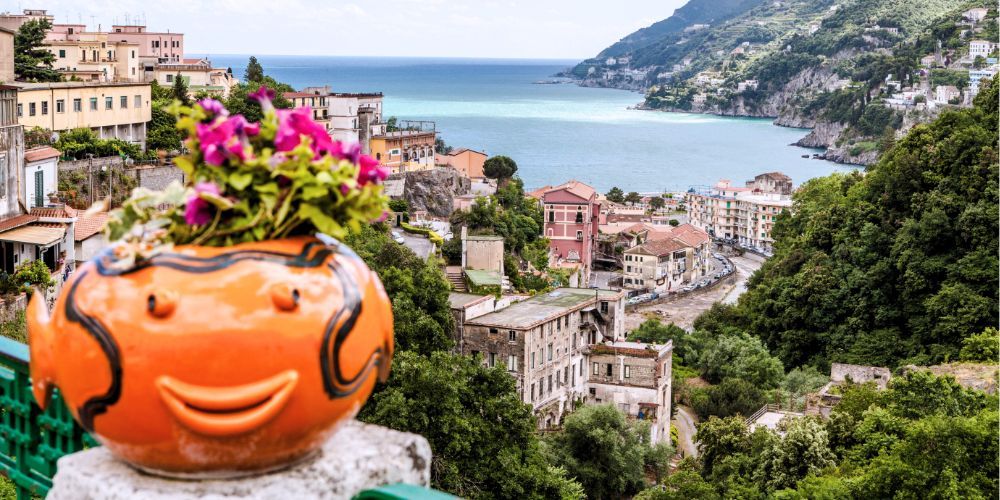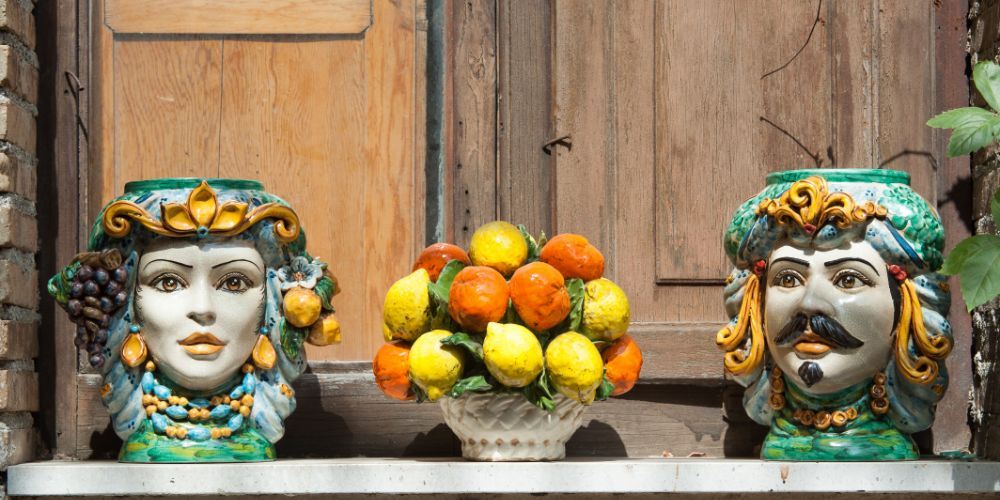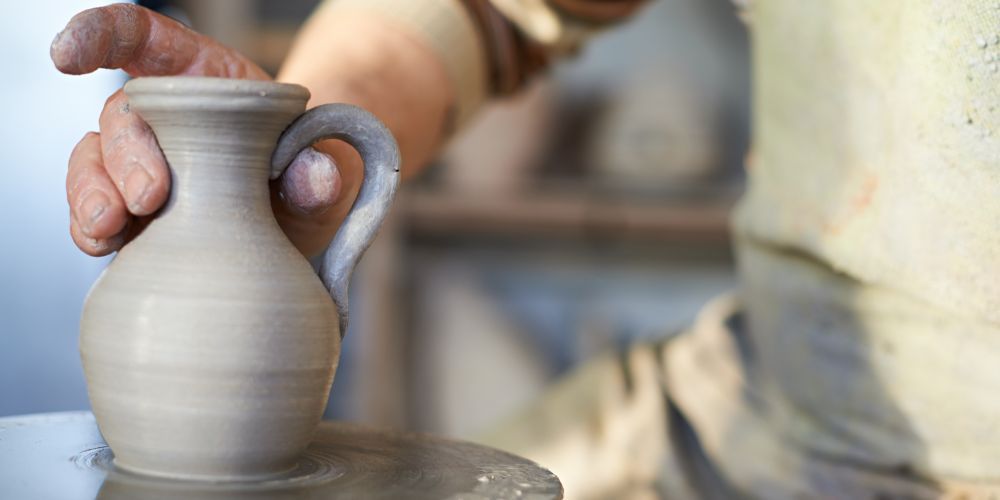It could be said that the history of ceramics begins in the mists of time. A resistant, versatile material that also lends itself well to decoration could only have great success all over the world.
Italian pottery, in particular, although already existing in the Etruscan age, experienced its heyday in the Renaissance, when great artists such as Donatello and the Della Robbia family choose it to created some of their masterpieces.
Even today, artisan workshops flourish throughout Italy, carrying on a rich tradition of modeling and decorative motifs so distinctive that they have become an integral part of the identity of some places. So, let's set off to discover the capitals of Italian pottery.

Vietri sul Mare: the best of italian pottery into the splendor of the Amalfi Coast

A journey to discover the most beautiful Italian pottery cannot fail to pass through Vietri sul Mare. This town, considered one of the gateways to the Amalfi Coast, has an upper part brightened by the hot southern sun, which boasts amazing views. The lower part has some of the largest beaches on the coast, bathed in the blue of the Mediterranean. It is no coincidence yellow and blue, indeed, constitute the leitmotif of the famous Vietri ceramics.
The passion of local artisans has passed down techniques and traditions through generations since the Middle Ages and it's easy to realize how this art is an integral part of local culture. Not only is Vietri full of shops dedicated exclusively to it, but it also hosts a Ceramics Museum. The glittering dome of the beautiful baroque church of San Giovanni Battista is made of majolica, as is the façade of the seventeenth-century Arciconfraternita dell'Annunziata. Even the town park's colorful handrails are made of ceramic and often so is the donkey, symbol of Vietri.
The art of Vietri ceramics has ended up reaching Naples too, and it's very popular all throughout the Amalfi Coast. It's easy to find, for example, majolica domes such as the one of Santa Maria Assunta in Positano, so sparkling it can easily be distinguished from the sea. In Amalfi, instead, it's the wonderful Cathedral's bell tower to be decorated with colorful tiles.
Visit Amalfi and PositanoCaltagirone's italian pottery between tradition and legends

Sicily is a land incredibly rich in ancient culture and tradition, so it's not surprising that some of the most beautiful Italian pottery can be found here.
Caltagirone, a town in the province of Catania, boasts an ancient tradition regarding craftsmanship in general, and ceramics in particular. Vases with the appearance of a human face are famous in Italy and around the world and are known here as Moorish heads. The tradition was born centuries ago, and has its roots in history, the presence of the Moors in Sicily is in fact well known and documented, and in legends that tell of impossible loves, passion and death. It's no coincidence that these vases are generally displayed in pairs, in the male and female versions.
Caltagirone, however, has a very rich and varied ceramic production, ranging from objects for everyday use, to ornaments and street furniture that make the whole city even more fascinating, colorful and unique.
The Renaissance of italian pottery, between Tuscany, Emilia-Romagna e Abruzzo

The regions of central Italy are a real goldmine of art and culture, and it seems that it was here, around the 15th century, that the fame of Italian pottery began, under the impulse of that extraordinary cultural movement that was the Renaissance.
Near Florence, indeed, is located the small village of Montelupo Fiorentino, actually already famous for its ceramics in the Middle Ages. The plates and vases thickly decorated with arabesques, geometric or floral motifs are well known. Montelupo's ceramics also stand out for their matte finish and a beautiful cobalt blue which is among the favorite colors of local artisans.
Faenza, in Emilia-Romagna, is another unmissable destination for Italian pottery's lovers. A thousand-year-old tradition that has evolved over the centuries has brought the master ceramists to acquire the necessary technique to create very complex decorations, with scenes taken from everyday life or from the Bible. Furthermore, in Faenza there is one of the most important ceramic museums in the world.
The history and skill of the ceramists of Castelli, a beautiful village in Abruzzo, is similar. Here you can find shops with centuries of illustrious history behind them, while just outside the city is the church of San Donato. It's a small church, but basically unique in the world, because its ceiling is made entirely of majolica tiles.
Umbria and the italian pottery's villages

Umbria is the final stop on our tour, but certainly not the least important. In fact, here there are four centers of excellence for the artisanal production of Italian pottery, but the entire region is still linked to this ancient art.
The small village of Deruta is absolutely worth visiting. Its ceramics are famous because they can reach even huge dimension, and besides they are unique. Each piece is hand painted according to Renaissance techniques.
The ceramics of Gualdo Tadino are instead famous for the brilliance of red and gold, the main colors of the local production. A technique of Middle Eastern origin, called a lustro, is what guarantees the particular brightness of the pigments.
In Gubbio, the mastery of the artisans made local ceramics famous already in the Middle Ages and today some of the pieces produced here are preserved in the major museums of the world, such as the Louvre or the Metropolitan in New York.
And what about Orvieto? This wonderful village is known mainly for its Cathedral, one of the most important monuments in Italy. However, local craftsmanship is equally rich and noteworthy. Ceramics were already made here in the time of the Etruscans and over the centuries the local production has always been characterized by originality and capacity for innovation in techniques and decorative motifs.
More info about Orvieto City PassAbout the author
Written on 10/10/2023



Paola Cirino
Pretty, colorful and of course handmade. Italian pottery are among the best of italian handmade. Here is where to find the most renowned